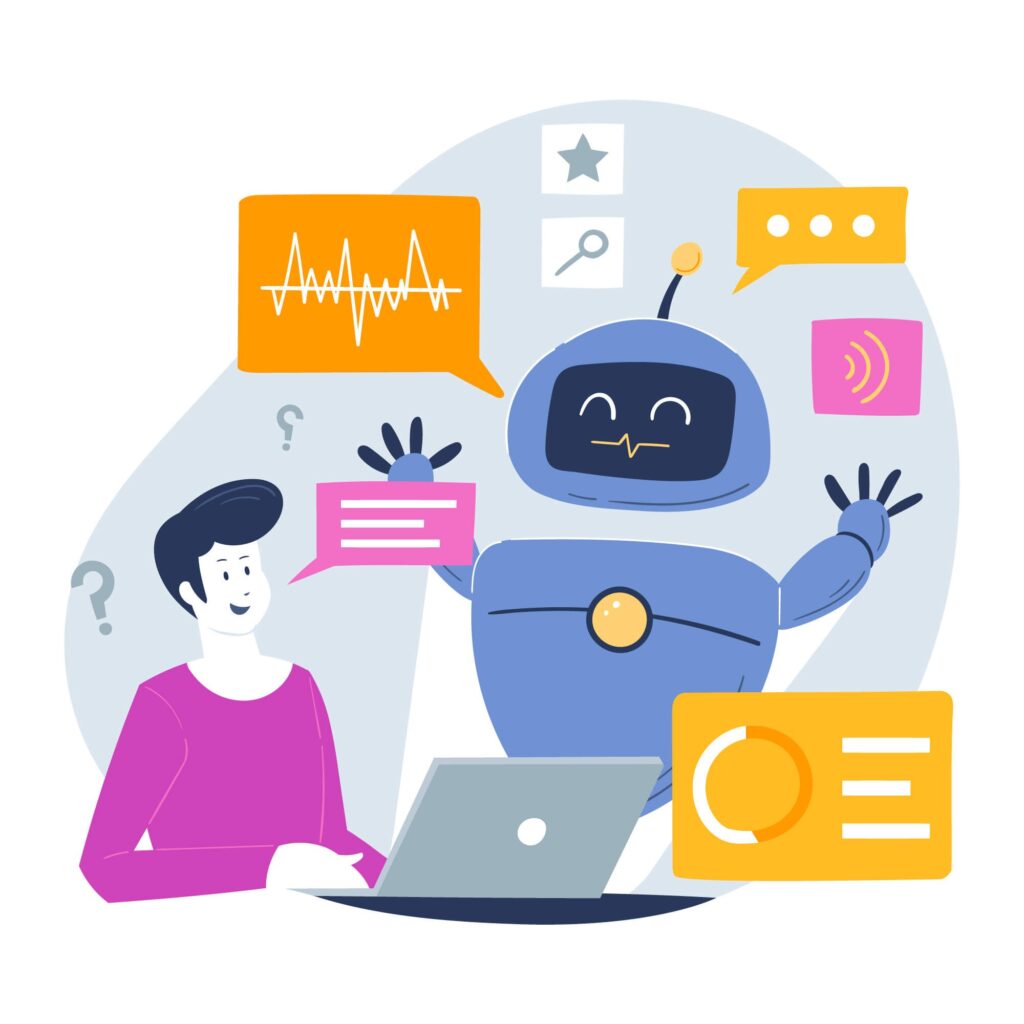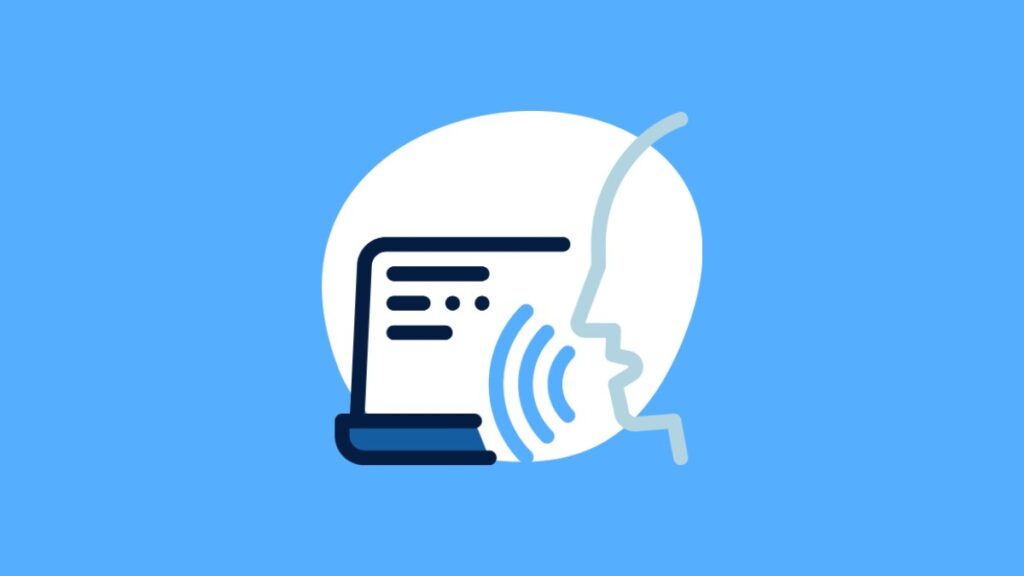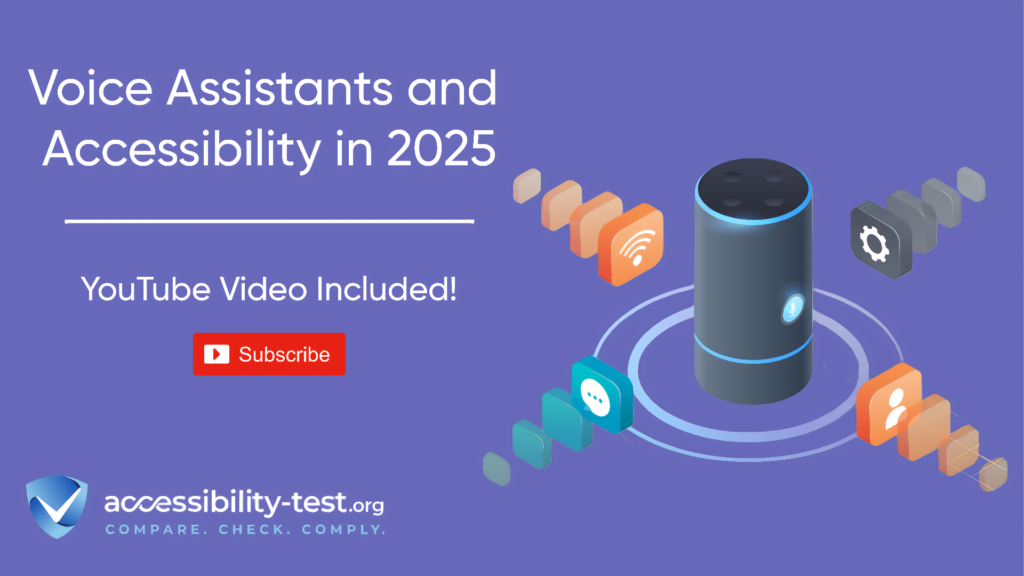Voice Technology for Inclusivity
In recent years, advancements in voice technology have catalyzed a significant shift from optional convenience to essential accessibility tools for users with diverse needs. Voice assistants have increasingly integrated into everyday devices such as smartphones, tablets, and smart home systems, allowing users to interact using natural language seamlessly. This capability has made technology more approachable for people with disabilities, including those with mobility impairments and cognitive challenges, enabling them to perform tasks that were once arduous or impossible without assistance.
The evolution of voice technology encompasses multimodal functionality, which enhances the user experience by combining voice input with visual or tactile interactions. This integration allows users to navigate interfaces, access information, and control their environments through various modalities, accommodating preferences and abilities. For instance, users can verbally request actions while visually confirming their completion, striking a balance that promotes usability across different user demographics.
The global reach of voice technology has significantly expanded due to enhanced language support, enabling a more inclusive environment. With increasing recognition of linguistic diversity, voice assistants now cater to numerous languages and dialects, making advanced accessibility features available to a broader population. This development promotes inclusivity, providing critical support to users from varying cultural backgrounds as they engage with technology.
Moreover, personalization is a defining characteristic of today’s voice technologies. By leveraging artificial intelligence and machine learning, these systems can tailor their responses and functionalities based on individual user habits and preferences. This level of customization not only enhances user engagement but also ensures that individuals with unique accessibility needs receive the most relevant support possible. Through these advancements, voice technology has undeniably established itself as a cornerstone of digital accessibility, transforming the landscape for millions worldwide.

Benefits of Voice Assistants for People with Disabilities
Voice assistants, such as Amazon Alexa, Google Assistant, and Apple Siri, have revolutionized the way individuals with disabilities interact with technology. These tools offer a range of extensive benefits that foster independence and enhance accessibility in day-to-day life.
One significant advantage of voice assistants is their ability to facilitate hands-free interaction. For individuals with physical disabilities, engaging with devices through voice commands eliminates the need for manual input, making it easier to access information or perform tasks such as adjusting home lighting, setting reminders, or controlling smart appliances. This hands-free functionality allows users to maintain a level of autonomy that might otherwise be challenging.
Additionally, voice assistants contribute to visual assistance through the implementation of screen readers. Individuals with visual impairments can leverage these tools to navigate applications and access written content by hearing it read aloud. For example, a visually impaired user can ask their voice assistant to read emails or provide directions, thus breaking down barriers that typically hinder accessibility.
Cognitive support is another vital benefit. For individuals with cognitive disabilities, voice assistants can assist in managing daily routines by providing reminders for medications, appointments, and tasks. This support helps users create structure in their day-to-day lives and reduces the cognitive load of remembering every detail.
Communication tools offered by voice assistants are also transformative. They can facilitate conversations by enabling users to send messages or make phone calls using voice commands. This feature is particularly beneficial for individuals who may struggle with typing or physically manipulating devices.
In educational and professional settings, voice assistants can enhance learning opportunities and productivity. Students with disabilities can use these tools to participate more actively in class discussions or research. Furthermore, voice assistants can streamline workflows in the workplace, ensuring that individuals can engage fully regardless of their disabilities. Overall, the integration of voice assistants significantly empowers individuals, thus promoting independence and inclusivity in various aspects of life.
Hands-Free Interaction | Revolutionizing Everyday Tasks
The advent of voice assistants has significantly transformed the way individuals with mobility impairments engage with their environment. The ability to perform tasks without the need for physical interaction is not just a convenience; it is a critical aspect of enhancing independence and quality of life. By utilizing voice commands, users can seamlessly manage various daily activities, illustrating the profound impact of hands-free interaction on their routines.
For example, consider a person with limited mobility who wishes to control their smart home devices. Voice assistants enable them to adjust lighting, set the thermostat, or even lock doors, all through simple verbal commands. This hands-free approach not only alleviates the need for manual operation of switches and knobs but also fosters a sense of autonomy and empowerment. Instead of relying on caregivers or adaptive devices that may require physical manipulation, individuals can enjoy a more self-sufficient lifestyle.
Moreover, the integration of voice technology in everyday tasks extends to personal organization and communication. Users can set reminders, create to-do lists, and send messages via voice commands, effectively managing their schedules without the constraints of traditional devices. This feature is particularly beneficial for those who may find typing or writing challenging, as voice-to-text functionality provides a reliable alternative for maintaining correspondence and organization.
In sectors such as healthcare, voice assistants are becoming invaluable tools. Patients can schedule appointments, request medication refills, or even engage in telehealth consultations without needing to physically navigate through online platforms or call centers. This accessibility revolutionizes the way individuals with mobility impairments manage their health and wellness, reducing barriers that would otherwise hinder their ability to seek care.
The ongoing development of voice technology continues to promise further enhancements in accessibility. As innovations emerge and become more refined, the potential for hands-free interactions to empower users with mobility impairments will only increase, underscoring the transformative role of voice assistants in daily life.

Visual Assistance | Bridging the Digital Divide
Voice assistants have emerged as a pivotal tool in enhancing accessibility for visually impaired users, playing a significant role in bridging the digital divide. By integrating advanced screen reader technology, these digital assistants significantly improve the navigation experience and the ability to access essential digital content. One of the primary features contributing to this progress is text-to-speech functionality, which converts written text into audible speech, allowing users to engage with information that would otherwise be inaccessible.
Furthermore, modern voice assistants employ object recognition technology, empowering visually impaired individuals to identify and interact with their environment more effectively. Through the utilization of cameras and sophisticated algorithms, these systems can discern various objects, read labels, and even describe scenes. This capability not only aids in daily navigation but also fosters a sense of independence and confidence among users. For instance, an individual can use a voice-enabled device to receive real-time updates about their surroundings, enhancing their overall spatial awareness.
Moreover, the integration of voice assistants with smart home devices provides an additional layer of convenience for visually impaired users. Voice commands can control various household functions, from adjusting lighting to managing thermostats, thus reducing reliance on physical controls and enhancing safety. The seamless interaction facilitated by voice technology makes it possible for users to maintain control over their environment with ease.
In conclusion, the incorporation of voice assistants equipped with screen reader technology is transforming the landscape of digital accessibility for visually impaired individuals. By offering robust solutions such as text-to-speech and object recognition, these technologies are not only aiding navigation and information access but are also playing an invaluable role in promoting inclusivity in the digital world.
Cognitive and Communication Support
Voice assistants have emerged as a significant tool in providing cognitive support, particularly for individuals with cognitive disabilities. Their ability to assist in basic daily tasks, remind users of appointments, and even guide them through complicated procedures offers a layer of security and independence that was often unattainable. For example, a voice assistant can serve as a digital companion, prompting users to complete essential tasks and encouraging cognitive engagement. This interactive approach enables those with cognitive challenges to maintain routines, reducing the burden on caregivers and enhancing everyone’s quality of life.
Moreover, these AI-powered tools not only aid cognitive processes but also facilitate communication for users with hearing or speech impairments. By integrating advanced voice recognition technology, voice assistants can convert spoken language into text, allowing individuals with hearing difficulties to follow conversations more effectively. Conversely, for those who may struggle with speech articulation, voice assistants can interpret and respond based on the user’s unique speech patterns. This adaptability ensures that communication barriers are minimized, fostering inclusivity and participation in everyday interactions.
In addition to aiding in daily tasks and improving communication, voice technology can promote social interaction for individuals who may otherwise feel isolated due to their cognitive or communicative limitations. Offering a means of connection and a platform for interaction, these tools facilitate conversations not only with friends and family but also with the broader community. This enhanced connectivity is crucial in combating loneliness, which is a frequent challenge faced by people with disabilities.
Overall, the multifaceted support provided by voice assistants is transforming the ways individuals with cognitive disabilities engage with their environment. By fostering independence and improving communication, AI-powered tools serve as essential resources in promoting a more inclusive society. This trend is expected to amplify in 2025 and beyond, further embedding these technologies into the fabric of daily life.

Challenges in Making Voice Technology Fully Accessible
Despite the advancements in voice technology, several challenges remain in achieving full accessibility with voice assistants. One of the most significant hurdles is speech recognition limitations. Voice assistants often struggle to accurately understand diverse accents, dialects, and speech patterns. This issue can be particularly pronounced for individuals with speech impairments or those who speak languages other than the dominant language of the system. Thus, the effectiveness of voice technology can vary significantly among users, which may hinder its widespread adoption.
Privacy concerns also pose a considerable challenge in the realm of voice technology accessibility. Users may be hesitant to enable voice assistants due to fears regarding data security and potential abuses of personal information. This reluctance can prevent many from utilizing voice technology, thereby limiting their access to its benefits. Without appropriate measures to ensure data privacy, it will be challenging to foster trust and encourage individuals, especially those with disabilities, to engage with these solutions fully.
Furthermore, inadequate auditory feedback from voice assistants can impact their usability. Many users with visual impairments or cognitive disabilities rely heavily on auditory information to navigate and interact with the technology. If the feedback provided by these systems is not clear or comprehensive, it may lead to confusion and frustration, negatively affecting the overall user experience. Likewise, the limited customization options available for users who require tailored interactions with voice technology can hinder accessibility. Users may have different needs and preferences regarding how they interact with voice assistants, and a lack of adaptation options can further alienate these groups.
Lastly, dependence on internet connectivity remains a vital barrier for many users. Many voice assistants require a stable internet connection to function effectively. This dependence can exclude individuals in rural or underserved areas, where internet access may be unreliable or limited. Addressing these challenges is essential in enhancing the user experience and ensuring that voice technology can serve as an inclusive tool for all.
Addressing Speech Recognition Limitations
In the realm of voice assistants, speech recognition technology has achieved significant advancements; however, certain limitations persist, particularly affecting users with speech impairments or those possessing non-standard accents. Current algorithms often struggle to accurately transcribe speech that deviates from typical patterns, which results in frustrating user experiences and diminished accessibility. This challenge highlights a critical gap that needs addressing to ensure inclusivity in voice technology.
For individuals with speech impairments, existing speech recognition systems may exhibit a lack of adaptability to various speech patterns or the nuanced vocabulary some users employ. These limitations can lead to the misinterpretation of commands and hinder effective communication. Similarly, non-standard accents can cause recognition rates to plummet, as most algorithms are trained predominantly on a homogenous dataset predominantly representing standard dialects. Consequently, users with these marginalized speech profiles often encounter barriers that affect their ability to engage fully with voice-activated technologies.
To mitigate these issues, researchers and developers should focus on diversifying training datasets to encompass a broader array of speech patterns, dialects, and non-standard accents. Implementing user-centered design principles that prioritize the inclusion of diverse voices will enhance system accuracy and trust. Additionally, incorporating deep learning techniques, such as transfer learning, may allow algorithms to learn from fewer examples while retaining the necessary flexibility to adapt to new speech variations. This approach could significantly improve recognition capabilities, fostering a more inclusive environment for all users.
Moreover, the continued collaboration between speech technologists and the communities they aim to serve can provide invaluable insights into their challenges and needs. As voice assistants become increasingly integral to daily life, addressing the current limitations in speech recognition technology should remain a priority for developers aiming to create a universally accessible digital landscape.
Privacy Concerns in Voice Technology
The emergence of voice assistants has undeniably transformed the way users interact with technology. However, this rapid innovation has also raised significant privacy concerns surrounding the utilization of voice data. As users increasingly rely on voice-activated systems for various tasks, from managing home devices to seeking information online, the security of their personal data must be a top priority for developers and companies.
One of the primary risks related to voice technology is unauthorized access to sensitive information. Voice assistants may inadvertently capture audio snippets that contain personal details, which can be exploited by malicious actors. This potential for data breaches poses serious implications for users who may find their private conversations and information at jeopardy. An additional concern is the concept of persistent listening; many voice-enabled devices are always “on,” which raises unsettling questions about how much data is collected and stored without user consent.
To address these privacy challenges, it is imperative for developers and organizations to implement robust security measures. This can include end-to-end encryption of voice data, minimizing data retention periods, and providing users with clear, understandable privacy policies. Furthermore, voice-assistant providers should strive for compliance with established privacy regulations, such as the General Data Protection Regulation (GDPR) in Europe and the California Consumer Privacy Act (CCPA) in the United States. These regulations emphasize the importance of user consent and data protection, offering a framework for maintaining user trust.
Building user confidence in voice technology is essential for its continued adoption and growth. By transparently addressing privacy concerns and adopting stringent security protocols, companies can foster a safer environment. Ultimately, the success of voice assistants will depend on the balance between innovation and user privacy, ensuring that these transformative tools enhance accessibility without compromising personal security.

As we move towards 2025, the importance of ensuring universal accessibility in voice technology cannot be overstated. Innovative advancements must prioritize customization options that cater to the diverse needs of users, particularly those with disabilities. Personalization will allow individuals to tailor their voice assistants to better recognize their speech patterns, accents, and commands. Such adaptability can significantly enhance user experience, making these technologies more intuitive and responsive. Customizable voice profiles and adjustable sensitivity settings are examples of functionalities that can accommodate various user needs, ultimately fostering inclusivity.
Additionally, enhancing auditory feedback mechanisms is vital in making voice assistants more comprehensible and effective for users with hearing impairments or cognitive challenges. This can include clearer voice modulation, the option for visual alerts in conjunction with auditory prompts, and a broader range of languages and dialects. By refining the auditory feedback of voice assistants, developers can ensure that information is accessible to a wider audience. Incorporating machine learning algorithms could help adapt these systems to user preferences over time, optimizing the interaction between user and device.
Moreover, developing offline functionality is another crucial area for innovation. Many users find themselves in remote areas where internet connectivity is inconsistent or nonexistent. Thus, equipping voice assistants with offline capabilities allows for seamless operation regardless of network availability. This adaptation is particularly significant for individuals in rural communities or those with limited access to technology. As voice technology evolves, the integration of offline functionality can support diverse communities, making voice assistants a valuable resource for everyone.
By focusing on these areas—customization, auditory feedback enhancements, and offline functionality—developers can ensure voice assistants remain accessible and user-friendly for all individuals, regardless of their unique circumstances.



